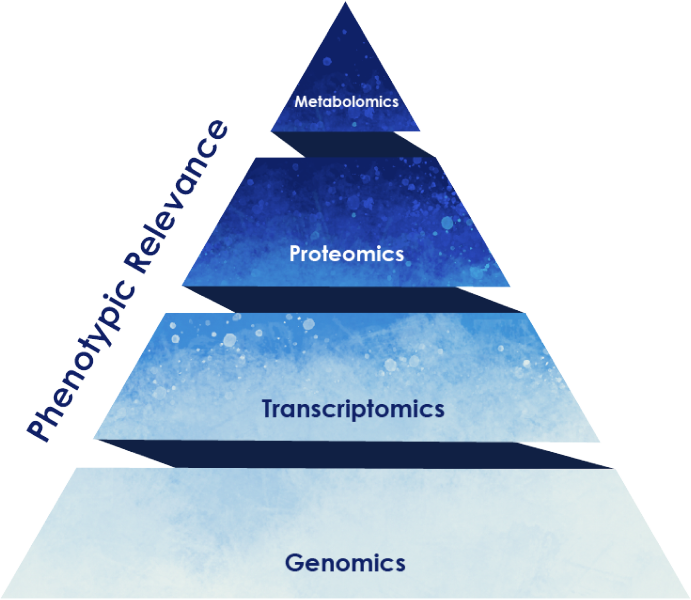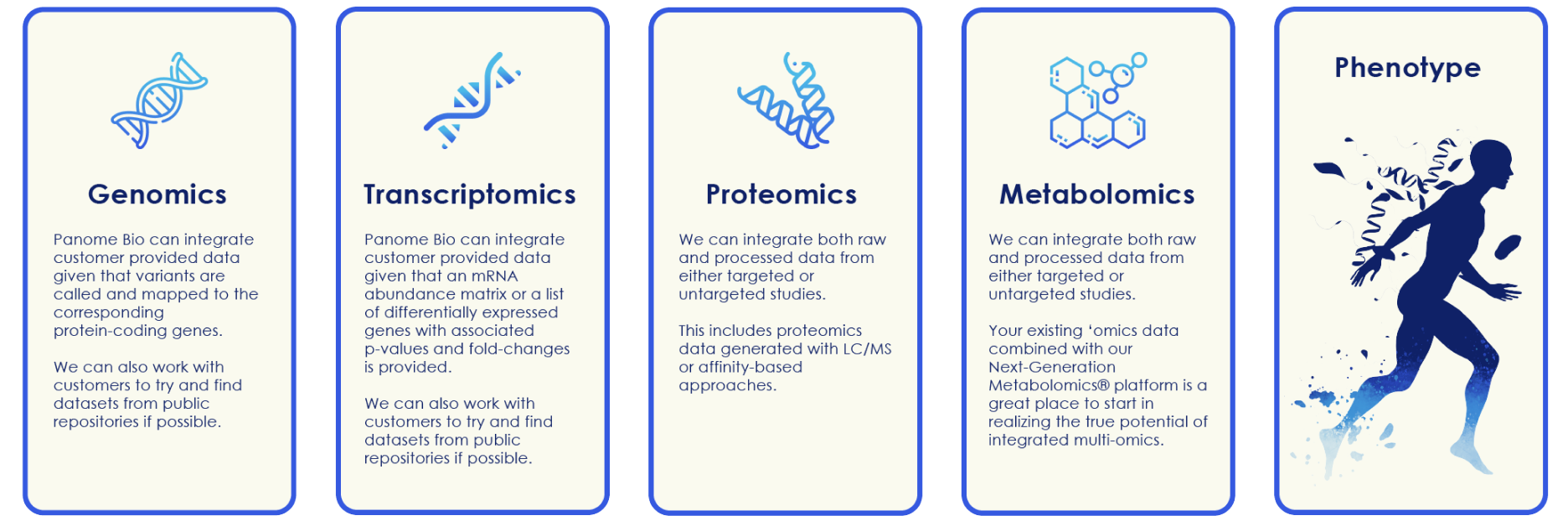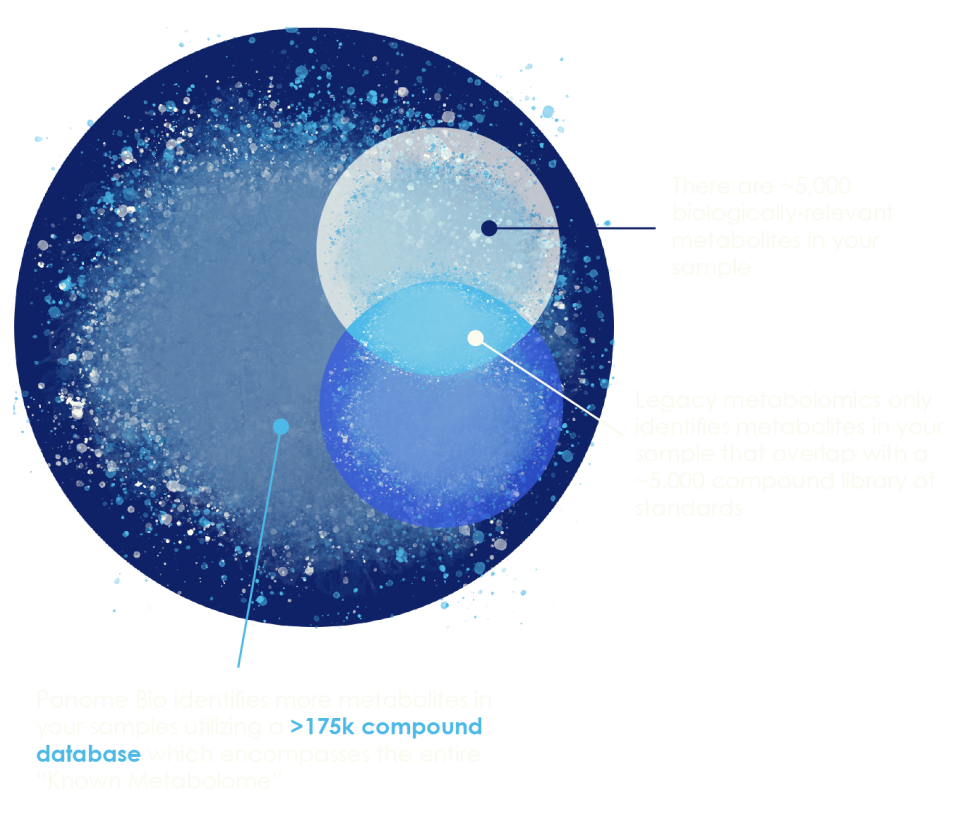Let’s get started!
Discover the unparalleled advantages of Panome Bio’s advanced multi-omics technology. Our state-of-the-art liquid chromatography-mass spectrometry assays and comprehensive data analysis provide you with the highest quality, most interpretable insights into your metabolomics and proteomics data.
Ready to elevate your research? Connect with us today.





